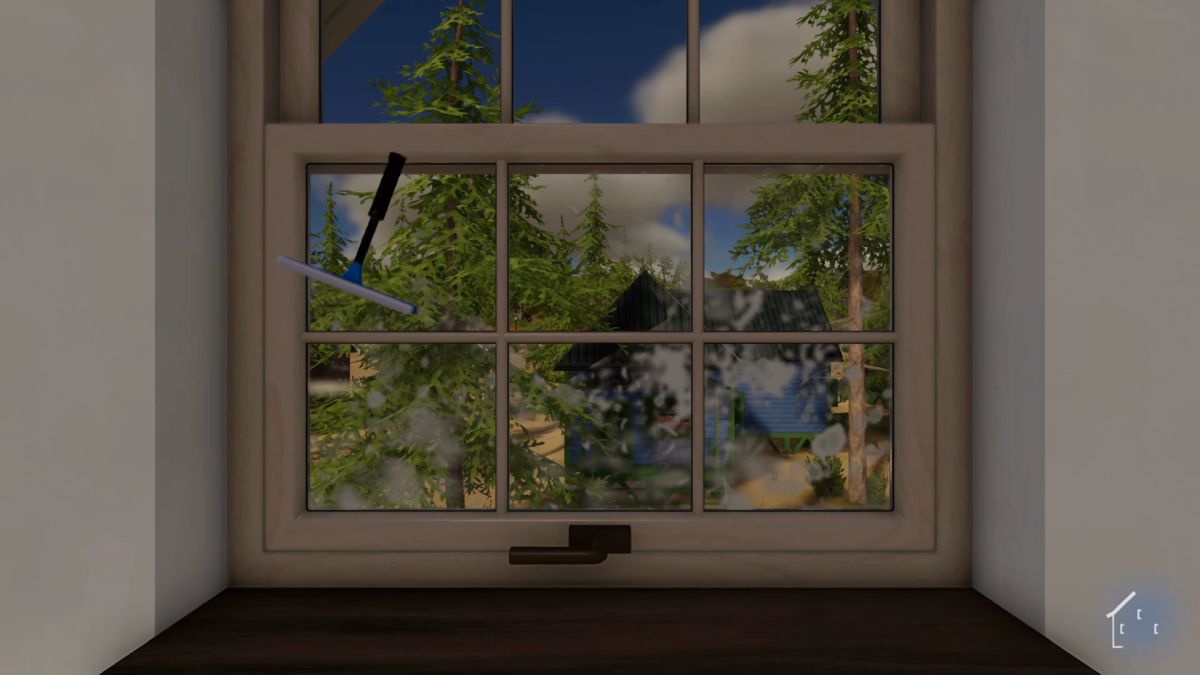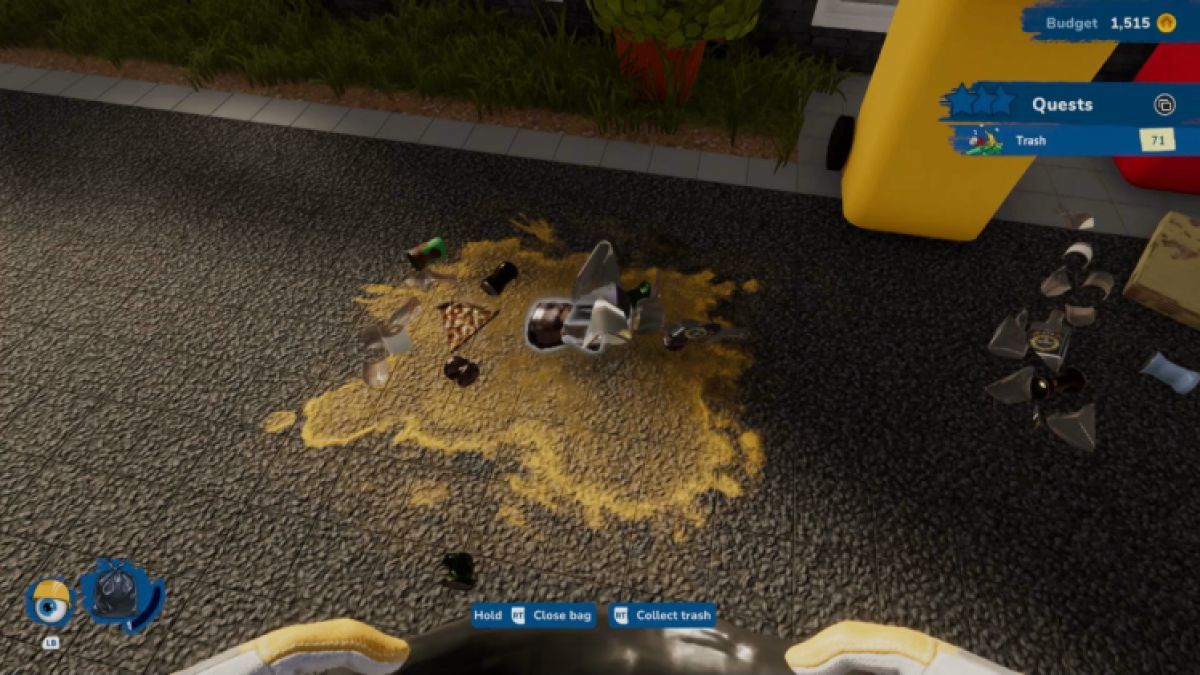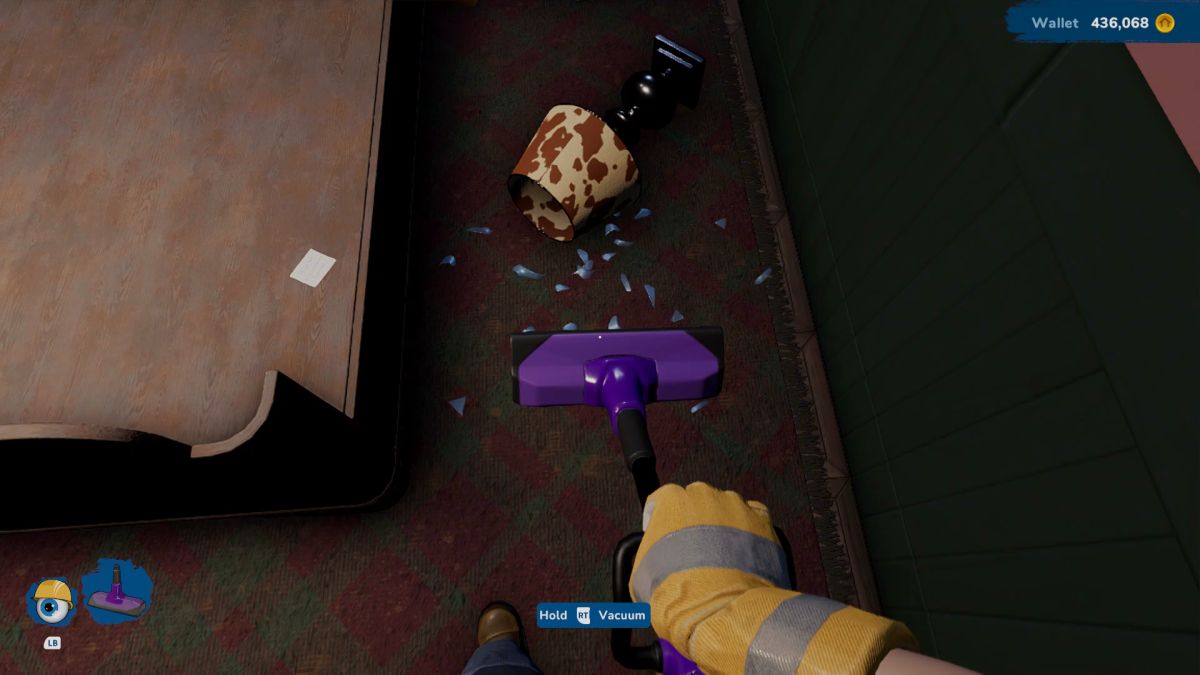Although you’ll spend some of your time building and staging as you play House Flipper 2, a lot of the game’s earliest segments make cleaning a priority. Here is our guide to the best cleaning practices in House Flipper 2.
House Flipper 2 – best cleaning practices
In House Flipper 2, you have a variety of tools at your disposal. The campaign introduces them one at a time and lets you grow comfortable with them. Before long, you’ll use several different tools in conjunction with one another, blowing through the house like a cleansing wind. To clean houses most efficiently, familiarize yourself with not only the Cleaning tools but the Vacuuming and Collecting trash tools.

A regular cleaning job
At first, the regular old Cleaning tool is your best friend. You roam the house, spray bottle and rag in hand. There are lots of grime streaks or outlines where objects such as picture frames and clocks once hung. You’ll also encounter animal footprints and mud tracks from careless humans. There’s even paint and other such gunk.
Typically, you will enter a portion of the house and the game will tell you how many “Stains” you need to eliminate. You can watch the number tick down as you wipe away obvious issues. In my experience, some of the stains are hard to spot. They may blend too well with the background, or I’ll just look right past them because they seem like part of an intentional design.
Sometimes, there are water stains on the ceiling. It’s easy to remove part of a stain as you wipe, and then a tiny fragment is harder to spot after the fact. Fortunately, you can press a button or key to sweep the area with your sensor. Briefly, any remaining problem areas light up. I find it works best if I stand in a corner and look out across the room, rather than scanning repeatedly as I wander across one.
Sometimes, you also need to clean windows. These show up on your list as Windows, simply enough. When you get near a grimy window, your standard Cleaning tool automatically morphs into a squeegee. You can press and hold a button as you swipe across the window to clean away the grime. In this case, the window will flash with light to let you know when you’ve finished. If you approach a dirty window or glass door and the option doesn’t appear, try approaching from the opposite side.
Suck it up with the vacuum
The Vacuum tool becomes useful shortly into the campaign. You typically use it to pick up a few select items, such as a bunch of dead flower petals on the floor, sand, or even tiny shards of broken glass. Half the time, I approach something I need to vacuum while still carrying my rag and spray. If cleaning a spill that way doesn’t work, it’s usually time to pull out the vacuum. Switching between the two tools is easy. When I enter a new room in a house I’m flipping, I usually try to break down my cleaning in steps to save time. I’ll start by collecting garbage. Then I’ll wipe away any stains. I vacuum last since that tool is used less often than the others.

Enough of that garbage
The Collecting trash tool is my starting point when I first enter a new room. A lot of sites have debris or fast food containers piled up on surfaces. There might be old makeup tubes scattered across the floor, or old cleaning tools that have outlived their usefulness. You can gather them and stash them in a trash bag, which you then should dump in the nearest rolling trashcan.
There are a couple of points to note here. The first point is that your trash bag only holds so much. Near the start of the campaign, I found that I filled it almost every few steps into a serious clean. The more trash you pick up, though, the more experience you earn toward perks. As you unlock perks, you can carry more trash without having to dump any bags. As a side note, one best practice is to find the rolling trash can outside and use the Hands tool to move it to a more convenient, central location. That saves you extra trips.
Related: House Flipper 2 review – Built right
The second point worth noting is that sometimes you should use the Flipper tool first. Some objects can either be thrown out or sold for profit. Early on, trashing everything may deprive you of income. Therefore, I start with a Flipper tool to see what I can sell and only then throw out the rest. As you advance through the campaign, you’ll earn the Nothing Goes to Waste perk that lets you rely more heavily on your trash bags without losing potential income. The Grab What You Can perk also lets you pick up more debris at once.
Even in the middle of a clean, you can assign new perks as they become available. Pause the action and check your Perks tab, then scroll down to find the row with a new perk available. Activate it and start using it right away to make the rest of the current clean go more smoothly.
Our House Flipper 2 coverage has only just begun, so check out the game’s tag page here on PC Invasion for more guides and news.







Published: Dec 15, 2023 12:50 pm